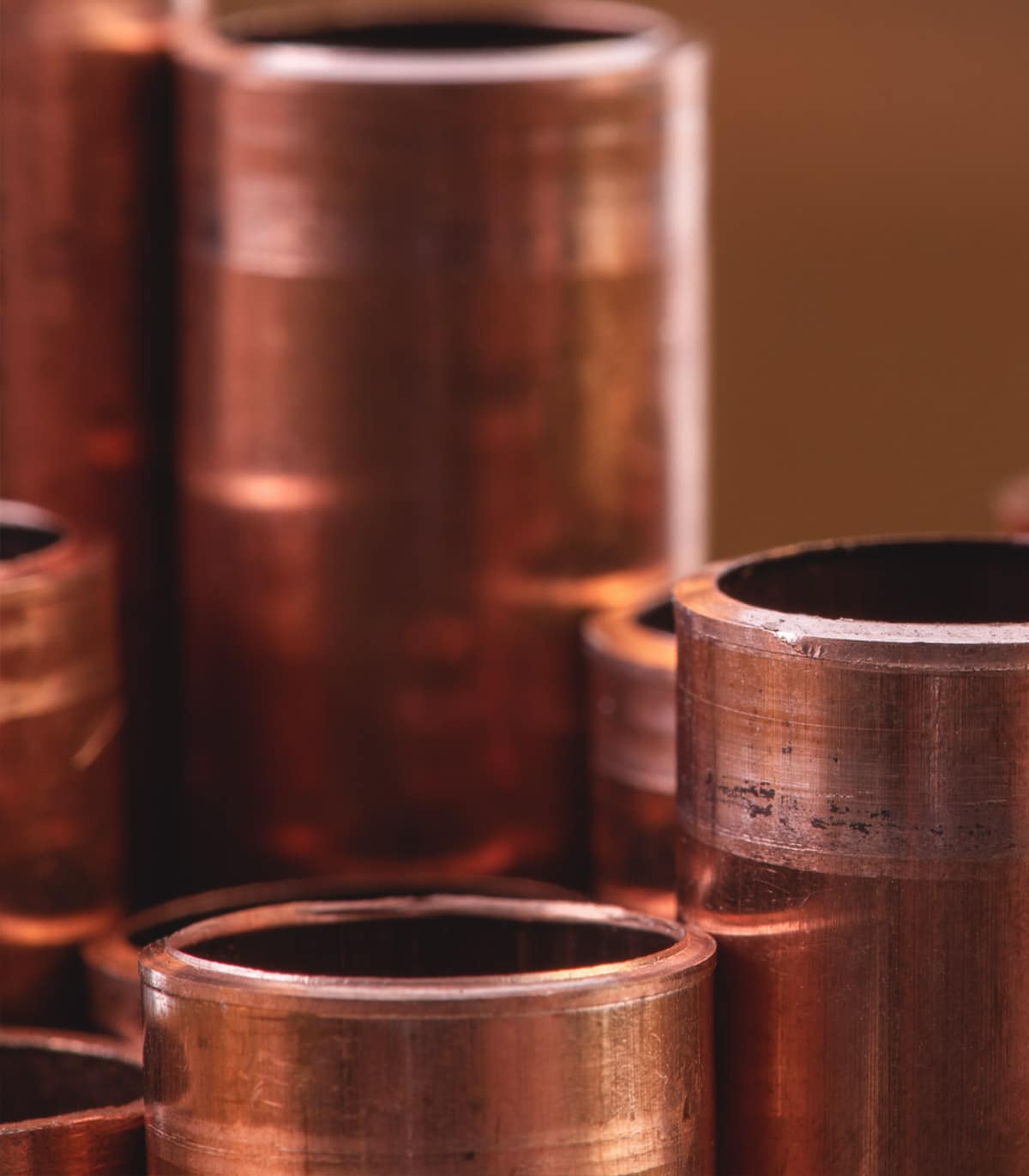Top Trends in Home Style Featuring Fashionable and Useful Copper Products
Top Trends in Home Style Featuring Fashionable and Useful Copper Products
Blog Article
How Copper Products Contribute to Lasting Practices in Various Markets
Copper items are increasingly recognized for their considerable payments to lasting practices across multiple markets, driven by their intrinsic homes such as recyclability, effectiveness, and sturdiness. In renewable resource systems, as an example, copper boosts the performance of solar and wind innovations, while its application in construction decreases waste via long life. In addition, the material's antimicrobial features provide encouraging benefits in healthcare settings. As industries look for to embrace even more sustainable techniques, the function of copper could confirm pivotal in accomplishing ecological goals. What implications might this have for future technologies in sustainability?
Copper in Renewable Resource
Copper plays an important role in the improvement of renewable energy technologies, acting as an important conductor in numerous applications. Its remarkable electrical conductivity and resistance to rust make it an ideal material for electrical wiring, which is necessary in photovoltaic panels, wind generators, and energy storage systems. In solar photovoltaic systems, copper is used in the interconnections and wiring, enabling efficient power conversion from sunlight to electricity.
In wind energy, copper is indispensable to the generators and transformers that transform kinetic energy right into electric power, making sure optimal efficiency and integrity. The need for electrical cars (EVs) is boosting, with copper being a key element in batteries, electric motors, and charging infrastructure. The shift to EVs substantially boosts the demand for copper, as these automobiles commonly use 4 times more copper than standard inner burning engine cars.
As the globe seeks to mitigate climate adjustment and shift to lasting power resources, copper's function becomes significantly critical. The product not just enhances the performance and toughness of renewable power systems yet additionally supports the more comprehensive goal of minimizing greenhouse gas discharges and advertising a lasting future.
Eco-Friendly Construction Products
Recently, there has been a remarkable change in the direction of the adoption of eco-friendly building materials in reaction to expanding ecological issues. This adjustment is encouraged by the requirement for lasting choices that reduce environmental footprints while maintaining structural honesty and aesthetic allure.
Copper, understood for its longevity and recyclability, has emerged as a principal in this field. It can be utilized in roofing, pipes, and electrical systems, adding to power effectiveness and minimizing waste. Copper's longevity means fewer replacements with time, additional enhancing its sustainability profile.
Furthermore, products such as bamboo, redeemed wood, and reused steel are obtaining appeal. These choices not just use minimized ecological effect however also promote source conservation. As developing codes increasingly stress sustainability, architects and building contractors are integrating these materials right into their jobs, cultivating development in design.
The increasing fostering of green building and construction materials reflects a broader commitment to sustainability in the built setting. By prioritizing these materials, the building industry can dramatically lower its carbon footprint, align with regulative requirements, and sustain a healthier community for future generations. This fad marks a crucial action in the direction of a more lasting future in building.
Copper's Role in Health care
Recent studies have highlighted the considerable function of copper in healthcare setups, particularly due to its antimicrobial homes. Copper Resources surface areas have actually been revealed to minimize the existence of microorganisms, consisting of infections and microorganisms, by approximately 99.9% within a short duration. This remarkable efficacy makes copper a very useful product for high-touch surface areas in hospitals, such as doorknobs, bed rails, and IV poles, consequently adding to boosted infection control actions.
In addition to its direct antimicrobial results, copper also plays a duty in the wider context of health center sustainability (Copper Products). By including copper into medical equipment and home furnishings, medical care facilities can reduce the incidence of healthcare-associated infections (HAIs), which not only enhances individual results yet also lowers the prices associated with extensive medical facility remains and additional therapies
Furthermore, copper's longevity and recyclability line up with lasting techniques, permitting liable resource management. As health care systems significantly focus on both client safety and security and ecological stewardship, the assimilation of copper items is becoming much more widespread. This double benefit emphasizes copper's important contribution to a much healthier, much safer, and much more sustainable health care environment.
Sustainability in Transportation

Additionally, copper's sturdiness and rust resistance add to the longevity of transport framework (Copper Products). In rail systems, for circumstances, copper elements boost the reliability and performance of signaling and power systems, essential for decreasing hold-ups and power intake. Additionally, copper's function in renewable resource systems, such this page as solar and wind, sustains lasting transport remedies by supplying clean energy for electric transit choices
Investments in copper innovation not only foster sustainability yet also boost financial growth and work creation in eco-friendly sectors. As industries make every effort to meet strict ecological policies, the application of copper items in transport emerges as a critical method in accomplishing sustainability goals and advertising a cleaner, a lot more efficient future.
Copper and Round Economic Situation
As the globe significantly welcomes sustainability, the duty of copper in the circular economic climate comes to be ever extra significant. Copper's intrinsic properties-- such as its conductivity, recyclability, and toughness-- position it as a key material in a resource-efficient economic climate. The round economic climate aims to decrease waste and make the most of resource use through recycling and reusing materials, and copper excels in this regard.
The steel can be reused indefinitely without loss of top quality, making it a perfect prospect for lasting methods throughout various industries, consisting of building, electronics, and eco-friendly power. By recovering and recycling copper from end-of-life products, markets can substantially lower the demand for virgin products, thereby lowering environmental effects connected with mining and handling.
Furthermore, the combination of copper right into circular economy frameworks not only conserves sources however also fosters innovation. Organizations that prioritize copper reusing add to a much more lasting supply chain, boosting their competition while lining up with regulative needs and consumer preferences for eco liable items.
Final Thought
To conclude, copper items significantly add to sustainable techniques across multiple fields. Their crucial function in enhancing renewable resource innovations, advertising environmentally friendly construction products, supporting infection control in healthcare, promoting lasting transportation, and personifying the principles of a round economic climate highlights the convenience and value of copper. By incorporating copper into numerous applications, sectors can accomplish better performance, lower environmental effect, and straighten with worldwide sustainability goals, inevitably fostering a more lasting future.

Copper's superb conductivity makes it a favored product in electrical vehicle (EV) systems, boosting power effectiveness and performance. Furthermore, check these guys out copper's role in renewable energy systems, such as solar and wind, sustains lasting transport options by supplying clean energy for electric transit options.
Their necessary function in improving sustainable energy technologies, promoting environmentally friendly construction products, sustaining infection control in health care, assisting in sustainable transport, and symbolizing the concepts of a circular economic climate emphasizes the convenience and relevance of copper.
Report this page